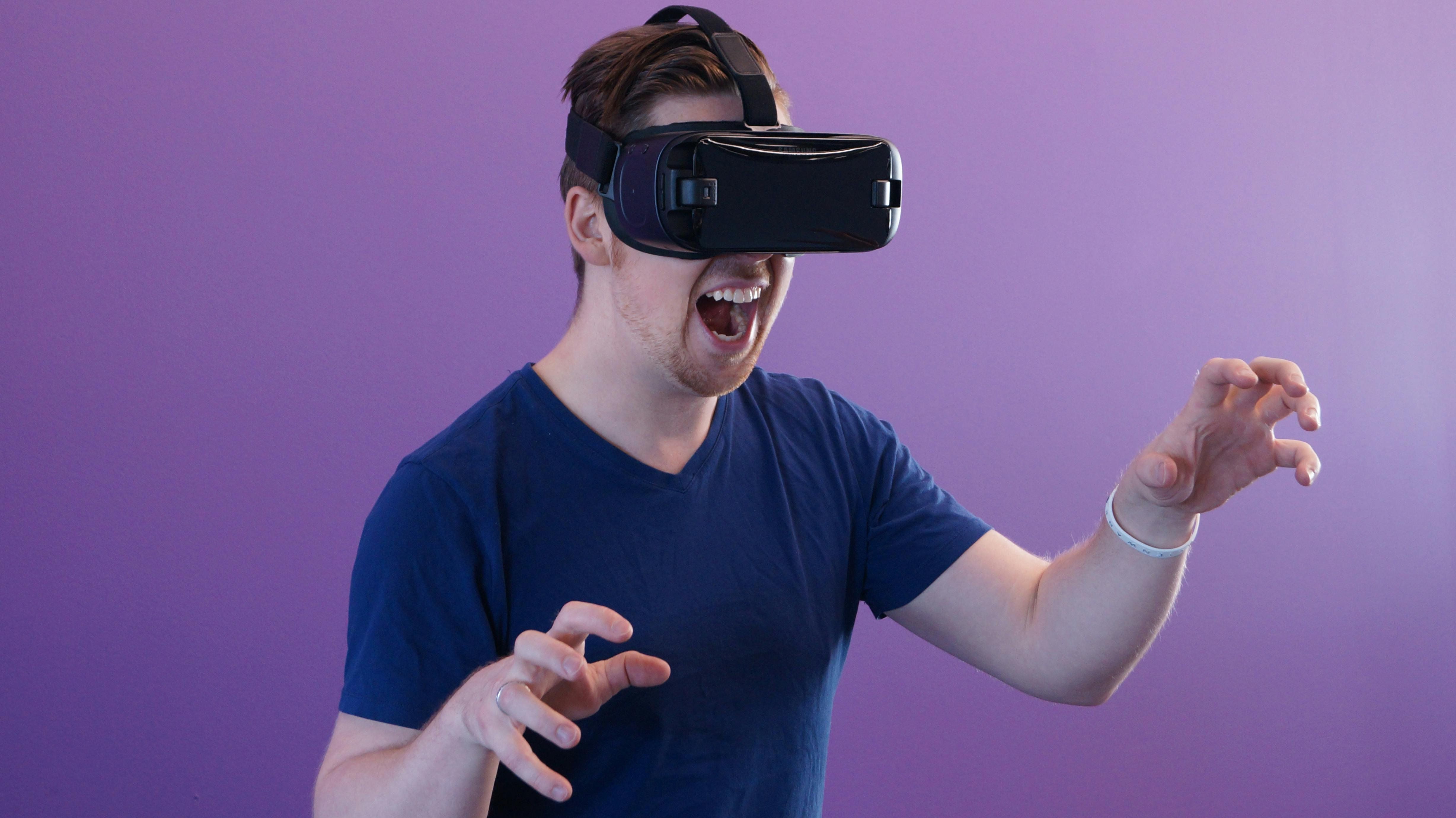What Makes VR Gaming Uniquely Addictive?
Virtual reality (VR) gaming has exploded onto the entertainment scene, impressing players with its ability to transport them into fully interactive worlds. Unlike traditional video games played on a flat screen, VR creates an all-encompassing experience that blurs the boundaries between reality and fiction.
Gone are the days when players would watch and play an interactive game from a third-person perspective. Now, players are right inside the game world, navigating its complexities and rewards. It's no wonder that VR gaming is poised to generate $6.9 billion in revenue by 2025.
This immersiveness has sparked growing concerns about its potential to increase compulsive behaviors. Researchers, psychologists, and even legal experts are now examining its effects closely.
In this blog post, we’ll delve into the unique elements that make VR gaming particularly addictive. We explore its technological allure as well as the psychological hooks.
Escape From The Real World
VR gaming immerses players in 360-degree visuals, dynamic soundscapes, and even tactile feedback, crafting an experience that feels like stepping into another reality. Unlike traditional games, VR creates a sense of presence, where the brain fully immerses itself in the virtual world. It’s no wonder players get swept away in epic adventures or serene landscapes.
A 2023 study in Frontiers in Psychology found that VR activates brain regions tied to emotion and spatial awareness more than flat-screen games. This makes every moment, from battling dragons to exploring alien planets, feel vivid and personal.
As headsets become sharper and more affordable, VR’s ability to transport players only grows, promising even more exciting escapes.
Psychological Rewards
VR games make every victory feel epic. Earning rewards or conquering challenges releases dopamine, the brain’s happiness signal, turning achievements into pure excitement. Vivid graphics, rumbling controllers, and soaring soundtracks make these moments unforgettable.
According to a recent study, VR games improve motivation and adherence to physical activity, significantly enhancing life expectancy among older adults.
These rewarding experiences inspire players to stay active and engaged, as they trigger a surge of dopamine in the brain.
Social Play and Shared Worlds
VR gaming offers more than solo escapism. It creates virtual communities where players interact through avatars, creating a sense of belonging that feels remarkably real. The social aspect, enhanced by motion tracking and voice chat, draws players back to maintain relationships formed in these digital spaces.
This emotional attachment can turn VR into a primary social outlet, especially for those seeking connection. As multiplayer VR experiences grow, this trend of social VR may deepen the medium's compulsive pull.
Seeking Accountability
As VR gaming’s popularity soars, some are exploring how its engaging designs impact players. Virtual worlds make the impact of video games all the more vivid, resulting in compulsive behavior.
The recent video game addiction lawsuit argues that features like reward loops and loot boxes can negatively affect gamers. According to Forbes, variable rewards have a hook that is similar to gambling.
These addictive features lead to anxiety, depression, and mental health issues among the youth. The idea is to highlight such issues and promote practices that keep gaming joyful and safe.
The Future of VR
The future of VR gaming promises even greater immersion, with technologies like brain-computer interfaces (BCIs) and full-body haptic suits on the horizon.
Direct From Brain to Game
BCIs, which decode neural signals to control outside elements like a computer or a game controller, are promising. The market for this technology is poised to grow to $500 million by 2029. This tech could make virtual experiences indistinguishable from reality, raising the stakes for addiction.
Meanwhile, haptic advancements will add layers of realism, from feeling raindrops to sensing a weapon’s recoil. These innovations could deepen presence and reward responses, making VR harder to resist.
Experts advocate for proactive safeguards, such as session timers or biometric monitoring, to curb overuse before these technologies become widespread.
The Role of AI in VR Gaming
Artificial intelligence is another game-changer, powering adaptive non-player characters (NPCs) and personalized gameplay. AI can analyze player habits, tailoring challenges or rewards to maximize engagement.
Even the creator of ChatGPT warned that AI-powered hyper-customization could trap players in endless loops of satisfaction, intensifying addiction risks. As AI matures, its integration with VR will demand careful ethical oversight.
Market Growth and Accessibility
VR’s addictive potential is likely to grow in tandem with its increasing accessibility. Statista estimates that annual VR headset sales will reach 9.5 million units by 2028. This is a 35 percent increase from 2025.
Making VR more accessible could draw more people in, and healthy usage becomes essential.
Virtual Worlds That Rival Our Real World
VR gaming’s unique addictiveness stems from its immersive technology, psychological rewards, and social appeal. It’s a thrilling way to dive into new adventures, spark connections, and unleash your imagination, making every moment feel alive with wonder.
By savoring its magic with a few smart habits, players can keep VR a source of pure joy, ready to embrace the exciting horizons ahead.
